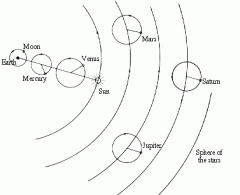Welcome to this week’s Math Munch!
Earlier this month, neuroscientists Stan Schein and James Gayed announced the discovery of a new class of polyhedra. We’ve often posted about Platonic solids here on Math Munch. The shapes that Stan and James found have the same symmetries as the icosahedron and dodecahedron, and they also have all equal edge lengths.
These new shapes are examples of fullerenes, a kind of shape named after the geometer, architect, and thinker Buckminster Fuller. In the 1980s, chemists discovered that molecules made of carbon can occur in polyhedral shapes, both in the lab and in nature. Stan and James’s new fullerenes are modifications of some existing shapes first described in 1937 by Michael Goldberg. The faces of Goldberg’s shapes were warped, not flat, and Stan and James showed that flattening can be achieved—thus turning Goldberg’s shapes into true polyhedra—while also having all equal edge lengths. There’s great coverage of Stan and James’s discovery in this article at Science News and a fascinating survey of the media’s coverage of the discovery by Adam Lore on his blog. Adam’s post includes an interview with Stan!
Next up—how much fun is it to find a fractal that’s new to you? That happened to me recently when I ran across the Fibonacci word fractal.
Fibonacci “words”—really just strings of 0’s and 1’s—are constructed kind of like the numbers in the Fibonacci sequence. Instead of adding numbers previous numbers to get new ones, we link up—or “concatenate”—previous words. The first few Fibonacci words are 1, 0, 01, 010, 01001, and 01001010. Do you see how new words are made out of the two previous ones?
Here’s a variety of images of Fibonacci word fractals, and you can find more details about the fractal in this article. The infinite Fibonacci word has an entry at the OEIS, and you can find a Fibonacci word necklace on Etsy. Dale Gerdemann, a linguist at the University of Tübingen, has a whole series of videos that show off patterns created out of Fibonacci words. Here is one of my favorites:
Last but not least this week, check out this groovy applet!
Sometime around the year 200 AD, the astronomer Ptolemy proposed a way to describe the motion of the sun, moon, and planets. Here’s a video about his ideas. Ptolemy relied on many years of observations, a new geometrical tool we call “trigonometry”, and a lot of ingenuity. He said that the sun, moon, and planets move around the earth in circles that moved around on other circles—not just cycles, but epicycles. Ptolemy’s model of the universe was incredibly accurate and was state-of-the-art for centuries.
In 1807, Joseph Fourier turned the mathematical world on its head. He showed that periodic functions—curves with a repeated pattern—can be built by adding together a very simple class of curves. Not only this, but he showed that curves created in this way could have breaks and gaps even though they are built out of continuous curves called “sine” and “cosine”. (Sine and cosine are a part of the same trigonometry that Ptolemy helped to found.) Fourier series soon became a powerful tool in mathematics and physics.
And then in the early 21st century Lucas Vieira created an applet that combines and sets side-by-side the ideas of Ptolemy and Fourier. And it’s a toy, so you can play with it! What cool designs can you create? We’ve featured some of Lucas’s work in the past. Here is Lucas’s short post about his Fourier toy, including some details about how to use it.
Bon appetit!







I never knew how many different formations the Fibonacci sequence could create!!
I had no idea that Fibonacci actually has limitless creative patterns.